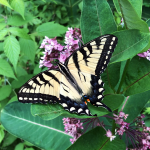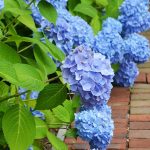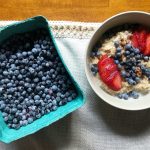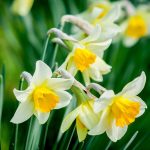Flower Power | Nantucket Floral Artist Hafsa Lewis
The Hafsa Lewis touch can be seen everywhere on Nantucket. She wants others to bring the beauty home.
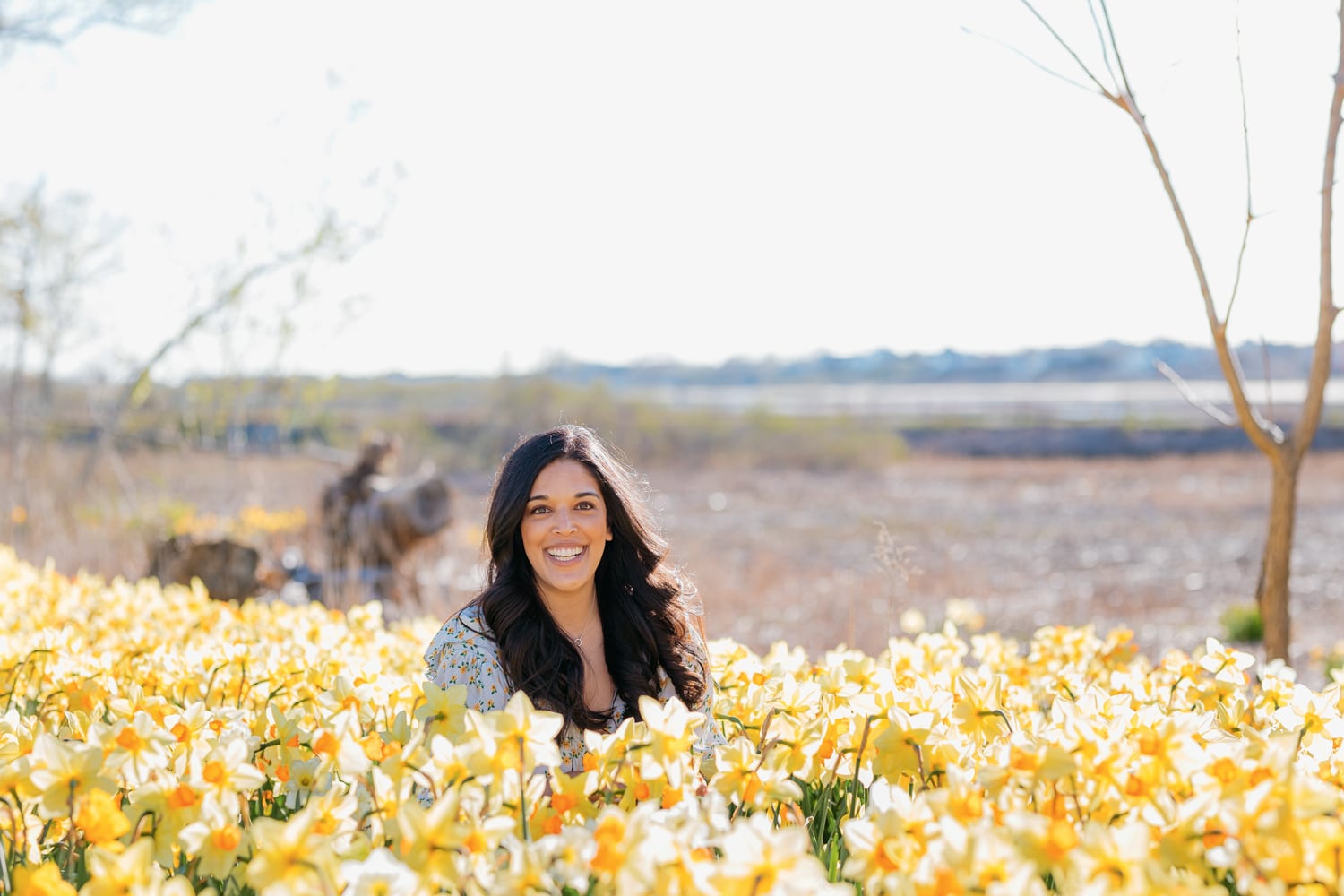
Coffee By Design | Portland, Maine
Photo Credit : Katherine Keenan“There’s a saying: All flowers must grow through dirt,” floral designer Hafsa Lewis tells me over lunch on a sparkling late-spring Nantucket day. “The first time I heard it, it just slapped me in the face.”
It’s easy to see why that expression hit home when you learn how Lewis found her way to floristry—and to a rebirth, of sorts—on this Massachusetts island. A series of traumatizing experiences beginning about a decade ago had left her reeling. First, she was near the Boston Marathon finish line in 2013 when the bombs went off, and she went to the aid of a gravely injured woman. Two years later, she lost her savings in a Ponzi scheme, and then in 2017 her husband abruptly left her. Devastated, she quit her job at a Boston hospital, abandoned her plan to become a mental health counselor—she holds a master’s degree in clinical psychology—and moved to Nantucket to take a bartending gig.
“It was a dark, dark time in my life. I lost 30 pounds. I had no confidence,” she says. “The only time I didn’t feel like I wanted to die was when I was surfing—or playing with flowers.”
Lewis had enjoyed dabbling in floristry as a freelancer for an event planner. But now flowers felt like her salvation, a way to lose herself in beauty when things felt so bleak. They also presented a path forward. In 2018, she launched Hafsa & Co. as a floral marketing company specializing in the kind of large-scale fresh and faux installations that businesses increasingly use to beautify their spaces, attract customers, and generate social media hits. After attending workshops in her native England, as well as in Ecuador and Mexico, to learn the mechanics of the displays (hint: it’s all about chicken wire and zip ties), she started building her portfolio.
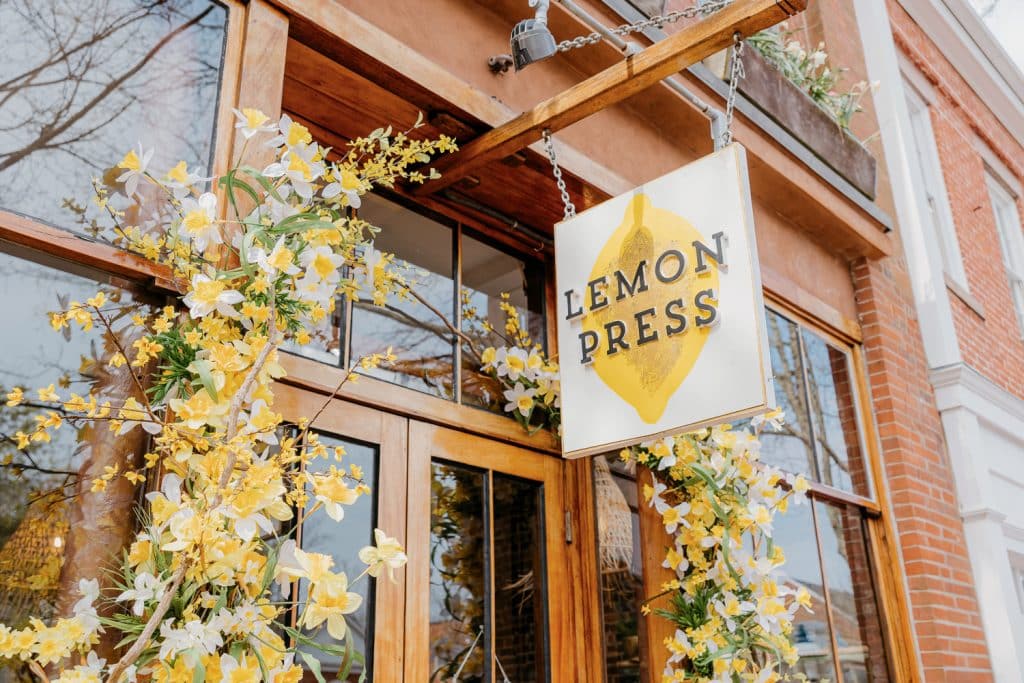
Photo Credit : Emily Elisabeth Photography
Among Hafsa & Co.’s most enthusiastic clients is Lemon Press, the airy organic café where we’ve met for lunch. It’s owned by cousins Darya Afshari Gault and Rachel Afshari, who happen to share Lewis’s Persian heritage and her belief in the magic of flowers.
“Our first install with Hafsa was [a small piece] over the coffee bar,” says Gault. “It was so well-received—people would come in just to Instagram it—we said, ‘Wow, let’s keep going.’ ”
Now, the Hafsa & Co. touch is everywhere at the café. An ethereal 16-foot swag of preserved white blooms—hanging amaranthus, lunaria, helecho fern, and others—graces a brick wall in the dining area; a canopy of faux wisteria dangles over the bar; and a border of foraged grapevines and silk daffodils and forsythias frames the eatery’s exterior doorway. (Lewis would soon be shifting that seasonal entrance display to summery spray roses and ranunculus.)
Lewis has also “flowered” the Artists Association of Nantucket gallery, the Nantucket Hotel, the Nantucket Dreamland movie theater, and a host of boutiques both on and off the island. She’s done displays for annual events including the Nantucket Wine & Food Festival, the Christmas Stroll, and the Daffodil Festival; made custom pieces for private parties (floral crowns, anyone?); and presented workshops for aspiring florists.
In 2021, the noted Los Angeles–based fine-art photographer Gray Malin enlisted Lewis to create elaborate floral props for a series of vignettes he’d come to the island to shoot. That same year and again in 2022, the local Coast Guard station asked her to put her creative touch on the iconic seasonal wreaths—daffodils in spring and poinsettias at Christmastime—that it hangs on the Brant Point lighthouse. (Lewis wasn’t involved with the 2023 daffodil wreath, which was delayed by lighthouse renovations, and then made and hung at the last minute by the Coast Guard when repairs were complete.)
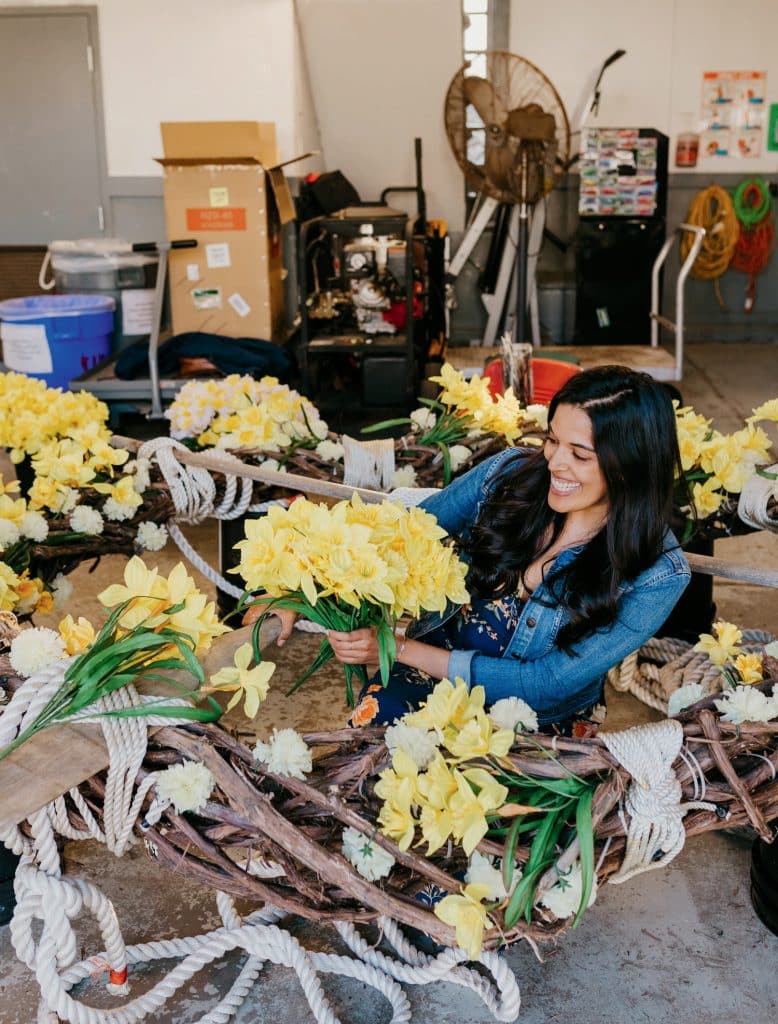
Photo Credit : Emily Elisabeth Photography
Like most small-business owners, she’s faced challenges. When Covid hit, she stayed afloat by making and delivering $50 bouquets with inspirational messages to residents who were stuck at home. Then in 2022, Nantucket’s Sign Advisory Council questioned whether her temporary outdoor installations were technically “signs” and therefore subject to a permitting process, a red tape–heavy requirement that likely would have sunk her business. Some detractors also sniffed that her displays were not appropriate on Nantucket.
Lewis went to every council meeting for six weeks to argue that her pieces were not signs—and that they were no different from the flower boxes most shops maintain. “I also wanted them to know the reason they were seeing more installations is because our community wants them. They make people happy.”
The controversy ended when the town unexpectedly ordered the council to disband before it made any recommendations. “And I’m still here to flower another day,” she says, smiling broadly.
Through it all, Lewis has remained mindful of what drew her to flowers: their power to heal, to express joy and sorrow, and to forge connections.
“The science part of my brain,” she says, “is really interested in how therapeutic flowers can be”—so interested, in fact, that she’s starting a doctorate program in clinical psychology this year with the idea of one day using flowers in a counseling practice.
“We have art therapy and pet therapy,” she says. “Why not flower therapy?”
There’s a bit more to the tale of how Hafsa Lewis blossomed on Nantucket. Those Coasties she helped with the lighthouse wreaths? Last summer, she married one of them.
“It was such a ‘meet cute,’” she says. “My friends tell me my life should be a Hallmark movie.” hafsaandco.com
DIY Floral Design
Granted, you’re probably not planning to erect an elaborate floral installation in your home. But Hafsa Lewis says the principles behind her “big stuff” apply to the simplest arrangements, too.
1. Picking your flowers: “Go with the ones that make you feel something,” she says, “whether it’s a $24 stem or a sad-looking Charlie Brown–type grocery-store flower. If you’re moved enough by something that nature’s created, and it sparks joy inside of you, then you should take it home and make it your own.”
2. Choosing your vessel: “Pick one that allows your flowers space to breathe. If they’re stuck in a vase that just stands them straight up, they can feel stiff. That’s not how they are in nature. They grow loose and wild and free. Let each flower have its moment—it doesn’t matter if it’s the side or the back or the front of the stem. Flowers are beautiful from all angles.”
3. Setting up for success: “First, make sure your vessel is clean. Remove any leaves from the stem that would be under the waterline, since submerged leaves can cause bacteria that will shorten the flowers’ shelf life. Give the stems a fresh cut before you put them in water.”
4. Taking your time: “I often walk away from a piece for a while so that I can come back to it with fresh eyes. And I take pictures in order to get a different perspective. That helps me see what’s missing and what I could do differently. I think that works for both large- and small-scale things.”
5. Honing your skills: Lewis recommends photographing one arrangement you do now and one you do in six months, then studying the pictures to see what you’ve done differently and what has stuck with you. “Did the shape change? Did you pick different colors? Once you start to pay more attention, you learn what you like and what is most meaningful to you.”




